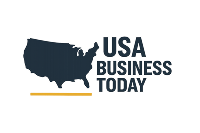Introduction: A Tale of Two Economies
One day, we see soaring stock markets, record-breaking IPOs, and mega-mergers lighting up Wall Street. The next, we hear about small businesses closing their doors, neighborhoods struggling to bounce back, and local shops trying to survive on thinner and thinner margins. It raises the question every entrepreneur has probably muttered under their breath at least once this year: Who’s actually winning right now—Main Street or Wall Street?
For business owners, this isn’t just a philosophical question. It’s personal. It’s about survival. It’s about strategy. And it’s about understanding the forces shaping the playing field.
Wall Street: Still Flexing, but Not for Everyone
Let’s give credit where it’s due. Wall Street is still a powerhouse. Big banks, hedge funds, and publicly traded companies have benefited from tech-driven efficiency, global scale, and deep investor pockets. The S&P 500 has remained strong, largely buoyed by a handful of tech giants and companies that have embraced automation and AI at breakneck speed.
Corporate profits are high. M&A activity is booming. Institutional investors are partying like it’s 1999.
But here’s the thing: that doesn’t tell the full story. Beneath the surface-level wins, there’s volatility. Inflation still looms. Interest rates remain stubborn. And investors are being more selective about where they place their bets. Wall Street may be thriving, but the wealth and opportunity it generates aren’t exactly trickling down to the average small business owner.
Main Street: Punching Back, Creatively
Main Street, on the other hand, has grit. Always has. And in 2025, local entrepreneurs are showing just how adaptive and inventive they can be. They’ve turned to technology, not just as a lifeline, but as a lever.
Point-of-sale software, digital storefronts, AI-driven customer service, and remote staffing are helping Main Street businesses compete like never before. We’re seeing boutique retailers offer virtual try-ons, family-owned cafes partner with delivery apps, and neighborhood service providers running leaner, smarter operations.
The best part? Consumers are rallying around these businesses. There’s a growing “buy local” movement that isn’t just sentimental—it’s strategic. People are recognizing that when Main Street thrives, communities thrive. Schools, roads, public safety—it all connects.
The Hidden Divide: Capital and Control
While technology is helping level the playing field, access to capital remains a dividing line. Wall Street firms can raise millions with a single phone call. Main Street owners, meanwhile, often face lengthy loan applications, tight credit restrictions, or investor disinterest.
Traditional financing hasn’t always served small businesses well! The terms can be rigid, the process is intimidating, and the funding doesn’t always come through when it’s needed most. That’s why more entrepreneurs are turning to creative alternatives: crowdfunding, revenue-based financing, or building smart, profitable businesses that grow through cash flow.
What Business Owners Are Doing Right
Here’s where Main Street is quietly winning. Business owners are becoming operators, marketers, tech tinkerers, and visionaries all in one. They’re focusing on what matters: delivering value, building relationships, and keeping their teams motivated.
They’re creating sticky customer experiences, collecting reviews, investing in automation, and offering subscription models that boost recurring revenue. They’re making things work without massive teams or investor capital. In short, they’re building resilient businesses—even when the macro trends seem to favor giants.
Wall Street’s Weak Spot: Detachment from Reality
Now here’s where Wall Street stumbles. It’s great at spotting trends and optimizing returns, but it’s not always connected to day-to-day reality. Algorithms can’t fix a shipping delay and they certainly don’t talk to angry customers. They don’t shake hands with clients or worry about community trust.
That disconnection shows and some publicly traded brands are falling out of touch with their audiences. Loyalty is waning. Consumers are demanding more transparency, more ethics, more humanity. Main Street, rooted in community and relationships, is uniquely positioned to deliver exactly that.
How Policy is Playing a Role
In 2025, government policy is once again a major influencer. Tax incentives for big corporations haven’t always translated into support for local businesses. However, recent efforts to reallocate resources—such as small business grants, access-to-capital initiatives, and local economic development funds—are starting to make a dent.
Still, it’s not even close to equal footing. Founders and owners need to stay aware, engaged, and vocal. Whether it’s joining a chamber of commerce, engaging with local reps, or advocating for better policies, business owners can’t afford to sit out.
Tech and Tools: The Great Equalizer
One of the most empowering things for Main Street businesses right now is access to powerful software. From AI tools that help write marketing copy to training systems that streamline onboarding, the playing field is finally shifting.
Tools like Trainual, for example, give business owners the ability to document processes, onboard new employees, and stay aligned—without needing a corporate HR department. It’s small moves like this that create big impact. They enable founders to run tighter ships, scale faster, and prepare for whatever surprises the economy throws next.
Community is the New Competitive Advantage
If 2020 taught us about resilience, 2025 is teaching us about connection. The businesses thriving today aren’t necessarily the flashiest or most well-funded. They’re the ones rooted in trust, customer care, and authenticity.
Communities want to support brands they believe in. And while Wall Street may have the resources, Main Street often has the relationships. That’s an edge money can’t buy.
Who’s Really Winning?
If you’re looking purely at market caps and quarterly earnings, Wall Street is still king.However, if you’re measuring impact, resilience, and how closely a business reflects the needs of its customers, Main Street has never looked stronger.
Founders and business owners should take heart. You don’t need a unicorn valuation or IPO headline to be successful. You need clarity, adaptability, the right tools, and a community that believes in what you’re building.
2025 isn’t about choosing sides between Main Street and Wall Street. It’s about learning from both. Big companies can learn agility, authenticity, and care from their smaller counterparts. Small businesses can learn about systems, scale, and smart growth strategies from their publicly traded cousins.
In the end, it’s not a fight it’s a fusion. The entrepreneurs who combine big-picture thinking with small-business heart are the ones who will win the decade.





